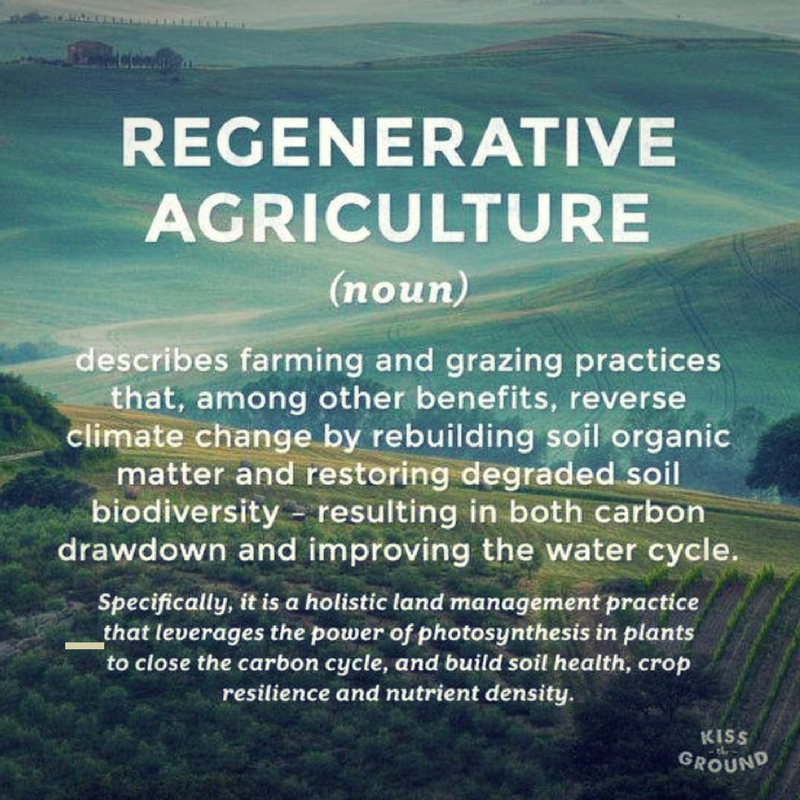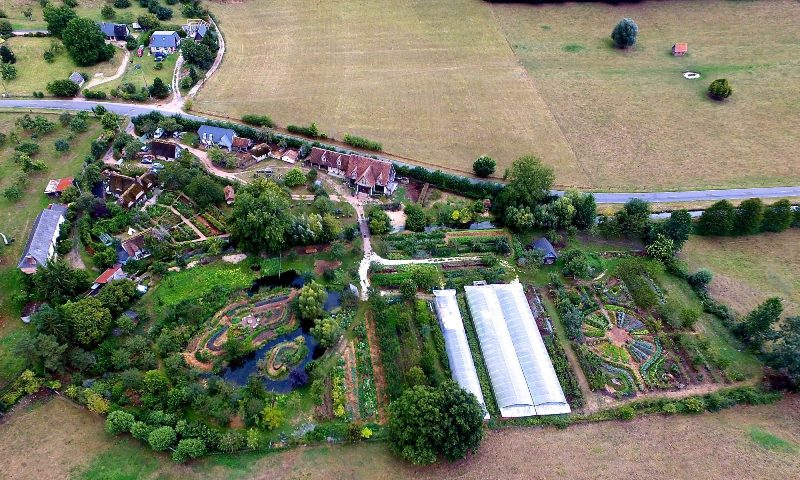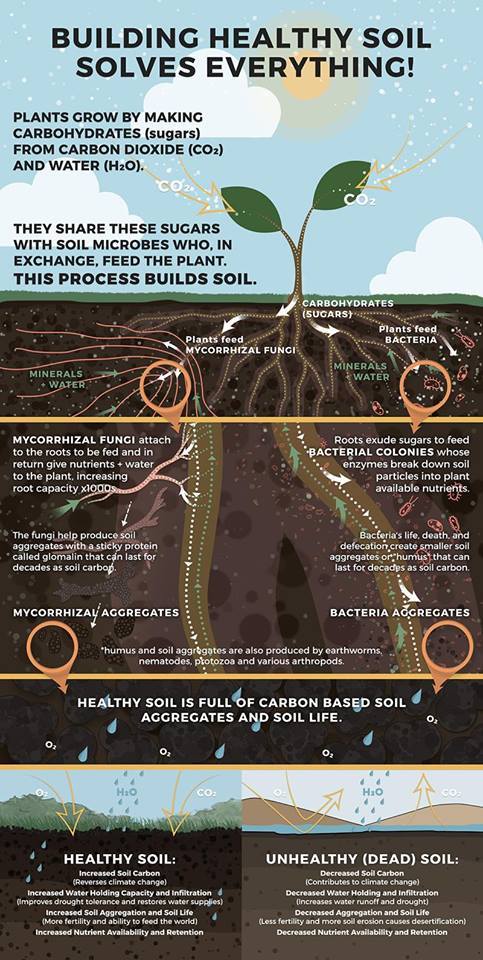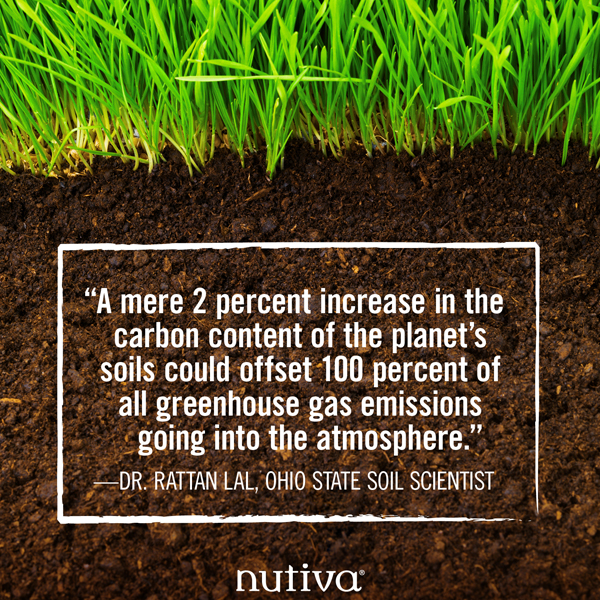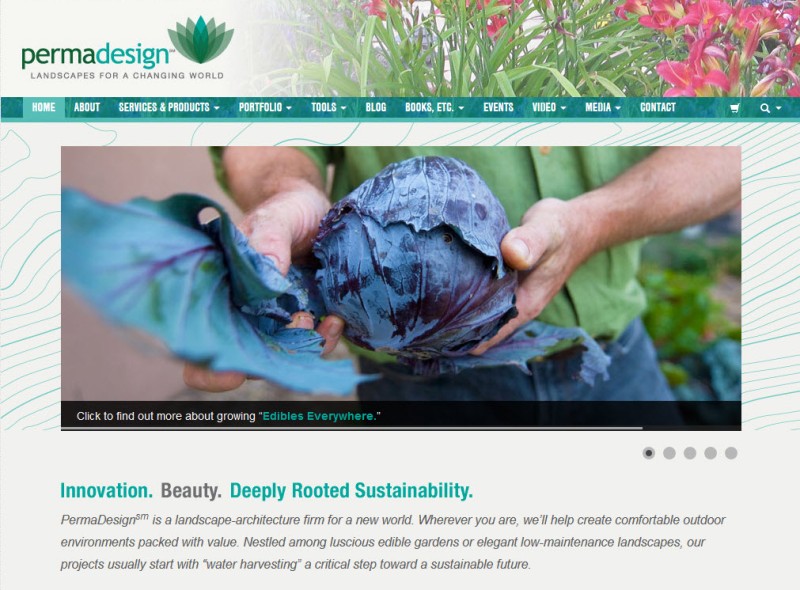Regenerative Agriculture: Difference between revisions
Siterunner (talk | contribs) No edit summary |
Siterunner (talk | contribs) No edit summary |
||
| Line 60: | Line 60: | ||
'Regenerative Agriculture and the Soil Carbon Solution': Vision Ag for Climate Action | <big>Bioneers - #RegenerativeAgriculture is a key solution to mitigating #ClimateChange</big> | ||
* https://bit.ly/36dvBYZ | |||
································································· | |||
<big>'Regenerative Agriculture and the Soil Carbon Solution': Vision Ag for Climate Action</big> | |||
Via Rodale / Common Dreams | Via Rodale / Common Dreams | ||
Revision as of 12:18, 29 September 2020
September 2020
Kiss the Ground.com
- Restoring the Soil
- Accelerating regenerative agriculture
- ·················································································
Regenerative Ag Meets Regenerative Watersheds and River Basins
Local, Regional and Global 'Green Best Practices'
Regeneration Globally
1000 Landscapes for 1 Billion People
Regenerative Agriculture in Europe, by Richard Perkins
·································································
Bioneers - #RegenerativeAgriculture is a key solution to mitigating #ClimateChange
·································································
'Regenerative Agriculture and the Soil Carbon Solution': Vision Ag for Climate Action
Via Rodale / Common Dreams
In contrast to industrial practices dependent upon monocultures, extensive tillage, pesticides, and synthetic fertilizers, a regenerative approach uses, at minimum, seven practices which aim to boost biodiversity both above and underground and make possible carbon sequestration in soil.
- Diversifying crop rotations
- Planting cover crops, green manures, and perennials
- Retaining crop residues
- Using natural sources of fertilizer, such as compost
- Employing highly managed grazing and/or integrating crops and livestock
- Reducing tillage frequency and depth
- Eliminating synthetic chemicals
·································································
- Regeneration International and Kiss the Ground team up to create a video series they call “Trails of Regeneration”
Farm du Bec Hellouin in Normandy, France
By what yardstick do farmers Charles and Perrine Hervé-Gruyer measure the success of their farm business? For starters: yield.
Using regenerative practices, the husband-and-wife team says they can grow as much food on one-tenth of a hectare (one hectare equals about 2.3 acres) of land as neighboring farms grow on only one hectare of land! How? The organic farm, based on the principles of permaculture, uses mound cultivation, agroforestry, associated crops, animal traction, fragmented ramal wood, effective microorganisms, terra preta and more.
··················································································································
Soil Health: Regenerative Ag Video Education Series
Soil Health Institute (SHI): “Soil health is the powerhouse of sustainability and the foundation of regenerative agriculture. Healthy soil improves resiliency to flood and drought, filters our water, and is an important key to improving carbon storage. We’re eager to share information with everyone who has an interest in soil health.”
The video series includes: Shannon Cappellazzi of SHI on “Soil Health Diagnosed as You’ve Never Heard Before”;
Alex Fiock of SHP on “Focusing on Soil Health from the Ground Up”;
Barry Fisher of the NRCS Soil Health Division and Betsy Bower of Ceres Solutions Cooperative present “Partnering to Enhance Soil Health”; and
Jane Hardisty, former NRCS Indiana State Conservationist on “You Are Changing the World!”.
“People say that clean water is the key to life on the planet, but the very same thing can be said about healthy soil – it is literally the foundation to productive agriculture, balanced wildlife habitats, and an overall healthy environment for all. These PED Talks are not only useful for our nation’s agricultural producers, but for our educators, policy makers and the general public. We all benefit from good soil health!”
·········································································································································
Patagonia says Regenerative Organic Agriculture is a vital solution to deal with global warming
• https://www.businessinsider.com/patagonia-global-warming-solutions-2019-4
·······························································
Regenerative Green Best Practices
• https://www.climaterealityproject.org/blog/what-regenerative-agriculture
Degenerative v. Regenerative
Read the complete Bioneers interview with John Chester
• https://bioneers.org/farmingfilming-and-biodiversityan-interview-with-john-chester/
• https://www.biggestlittlefarmmovie.com/
ARTY MANGAN: How can the system be changed from rewarding those who use degenerative practices – spraying chemicals, creating pollution, destroying biodiversity, etc. – to economically encourage regenerative agriculture?
JOHN CHESTER: We have underestimated the force of nature, which is conscious and more powerful than the political framework. It’s far more powerful than the economic framework. When that’s aligned and it’s supporting farms that grow things in a regenerative way, expect massive change. I think that we’re seeing incredible support from consumers who know about soil. There is a growing tide of awareness and education and those consumers are the people that will make the difference, beyond the politics, beyond the chemical companies that we’ve become dependent upon because of our complacency and detachment over a prioritization of innovating alongside of nature, which has been lost for 75 to 260 years.
We’re in a much better time now because there is a consumer base that wants this, that understands the value of nutrient density. There’s another consumer base that understands the value of restorative eco-agricultural practices. Ten years ago, people weren’t even saying the word regenerative...
Soil is the Word
Protect the Soil (or Else)
• http://ecowatch.com/2015/01/06/regenerative-organic-agriculture/
• http://ecowatch.com/2015/01/13/regenerative-organic-agriculture-2/
We’ve severely disrupted the balance in the “carbon triad” by clearing rainforests, degrading farmland, denuding pasturelands, and burning coal and oil. The carbon triad? Yes; think of the three main carbon sinks: the atmosphere, the oceans and the humus-sphere. While I’m sure you’re familiar with the first two, you might not know about the latter carbon sink. Humus is the organic component of soil. (Gardeners create it as compost.) The humus-sphere is made up of the stable, long-lasting remnants of decaying organic material, essential to the Earth’s soil fertility and our ability to grow nutrient-rich crops.
·········································
Carbon Storage, Soil-Based / 2017
“It’s immensely beneficial for agriculture to increase carbon in the soil.”
That’s Kate Scow of the University of California-Davis.
Adding organic matter such as decaying plant and animal material increases soil carbon. Scow says that improves crop yields, reduces erosion, improves water efficiency, and supports beneficial microorganisms.
It’s also a great way to slow climate change, because it helps plants store more carbon in the ground. But many modern farming practices can deplete soil carbon.
Scow: “A lot of people are making observations about it, like how it was when their grandfather farmed and how it is now.”
To improve soil health and reduce global warming pollution, California is investing seven and a half million dollars in the Healthy Soils program. It will promote farming methods that retain soil carbon, for example reducing tilling, growing cover crops and applying compost...
Practice Regenerative Agriculture at Home
·············································································
• https://www.greenpolicy360.net/w/Permaculture_Green_Practices
- Agriculture
- Agricultural Economics
- Alternative Agriculture
- Aquifers
- Biodiversity
- Bioneers
- Carbon Sequestration
- City-County Governments
- Climate Change
- Climate Policy
- Climate Smart Agriculture
- Earth Science
- Eco-nomics
- Ecology Studies
- Environmental Protection
- Farm-Related Policies
- Food
- Food-Related Policies
- Green Best Practices
- Green Business
- GreenPolicy360
- Land Use
- Natural Capital
- Organic Food
- Permaculture
- Resilience
- Soil
- Sustainability
- Sustainability Policies
- Water
- Water Saving
- Whole Earth

